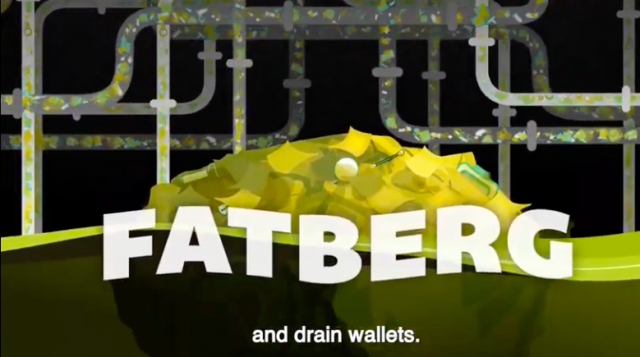
Bacon grease aficionados and baby wipe devotees have joined their unknowing forces by contributing to the growing number of the fatbergs clogging up New York City sewers, driving up costs for their removal, according to the City Dept. of Environment Protection.
Fatbergs are a congealed mass of improperly disposed of grease (typically cooking grease) and sanitary products that clog water infrastructure and must be manually removed.
The phenomena is a global one: In 2017, a fatberg weighing 130 tons was removed from a Liverpool, England sewer by means of a high-powered hose and manual labor, resulting in it being shipped away for recycling at the rate of 20-30 tons per day.
A giant #fatberg weighing 90 tonnes has blocked a sewer in Liverpool. Our reporter @adamphilllips has been down to the site to find out more @unitedutilities pic.twitter.com/miZSeVbA9m
— Radio City News (@RadioCityNews) February 21, 2019
Closer to home, NYC has launched a fatberg awareness campaign to get the word out on how to help solve the crisis, which equates to not flushing q-tips, tampons, and sanitary wipes and properly disposing of cooking grease:
A visit to the Newtown Creek Wastewater Treatment Plant in Brooklyn was in line for CBS NY, who reports that baby wipes continue to inundate the sewage plant at a cost of $18 million in 2017 alone for their removal:
As the raw sewage comes in from people’s homes and catch basins on the street, it travels to the treatment plant and meets its first line of defense — a gate that prevents wipes and other kinds of products from getting through.
“And whatever material that got caught on those bars is now getting pulled up and as you can see a lot of it is flushable wipes,” Sapienza said. “It’s on top of the rake. The rake is now bringing those wipes all the way to the top, to the main floor of the plant, where it’s going to be put into a dumpster to be carried away.”
In 2017, more than 50,000 tons of debris were transported to landfills. That’s equivalent to dozens of Olympic-size swimming pools. The price tag for that cleanup was around $18 million, triple from a decade ago
Leave a Reply



